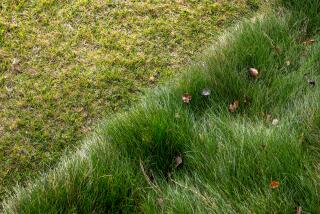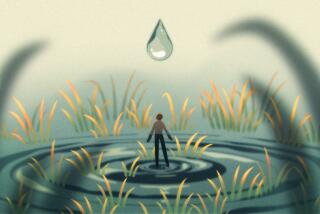Tips for Efficiency
- Share via
Know your soil. Clay, sandy or sandy loam require different watering practices. Much of Orange County is clay, which holds water longer than sandy soil. (If you aren’t sure of your soil, take a sample to your local nursery). Wasteful runoff occurs when the soil is too saturated to absorb water as it’s applied. To avoid this, set timers to water for five minutes, shut off five or 10 minutes, and resume for another two cycles. Water cycling enables water to reach the root zones instead of the gutter.
* Use a soil probe. Don’t water just because it’s sunny or the soil surface is dry. Probe beneath the soil at least six inches. Professionals use soil probes (available at Orange County Farm Supply in Orange). Soil probes are also useful for determining if you’re watering too much. Water should only reach the root zone. Probe immediately after watering to check soil’s moisture level.
* Water when evaporation is low. Usually this is between 10 p.m. and 10 a.m. When scorching summer days hit, additional watering before twilight may be needed to prevent burning.
* Mulch. Add a two-inch layer of mulch around plants, shrubs and trees to cool the soil, prevent evaporation and inhibit weed growth. Keep mulch away from the base of plants.
* Let grass grow taller in hot summer months. The extra length cools the roots and helps retain water.
* Don’t fertilize in summer. Plants don’t need to be stressed by growing during hot summer months. Allow them to rest, and fertilize in late September.
How Much Is Enough?
In hot summer months, lawns require, on average, approximately two inches of water each week. To avoid runoff, smaller amounts of water should be applied several times a week.
To check how long it takes your system to deliver one inch of water, you can buy inexpensive devices that measure water output. Or you can mark several cans or jars with a one-inch line, place them at different parts of your lawn and time how long it takes your system to fill them to the mark.
In summer, you should water trees deeply once a month so water reaches their root zones. Usually trees perform better if they aren’t watered on the same system as lawns.
Shrubs and plants should be on separate zones, too, and on average need half the amount of water as lawns. They should be watered weekly.






